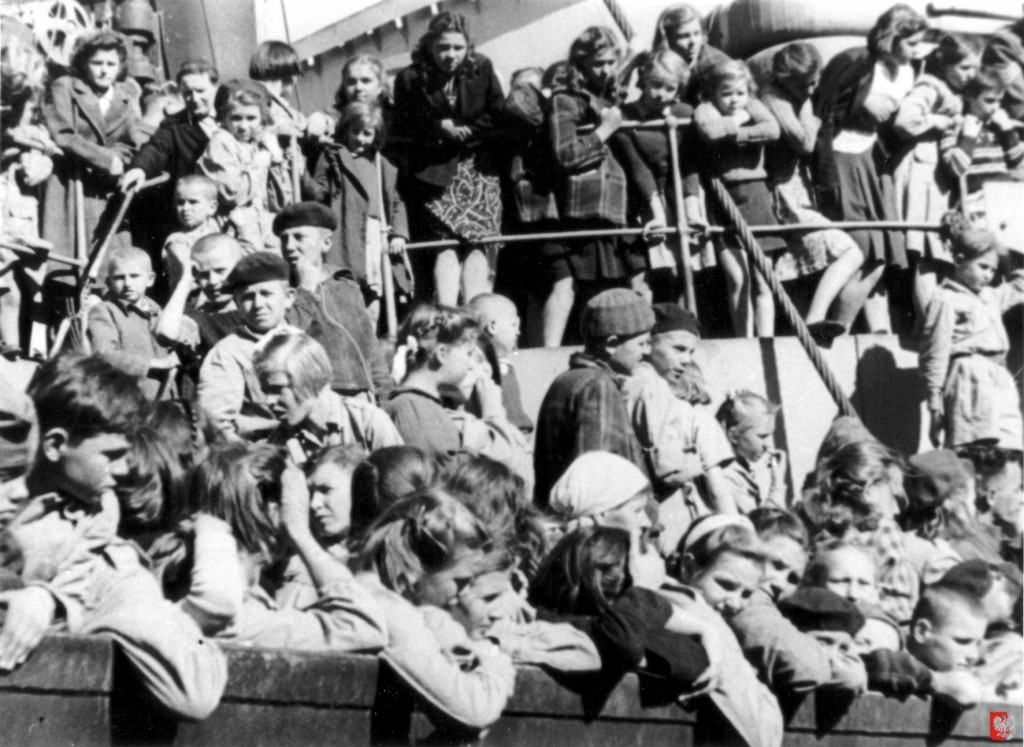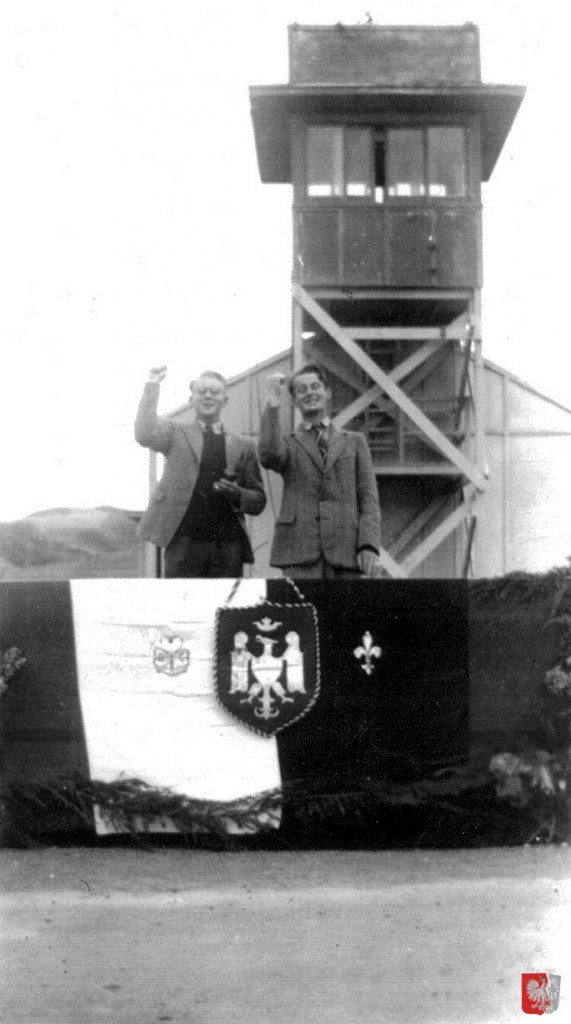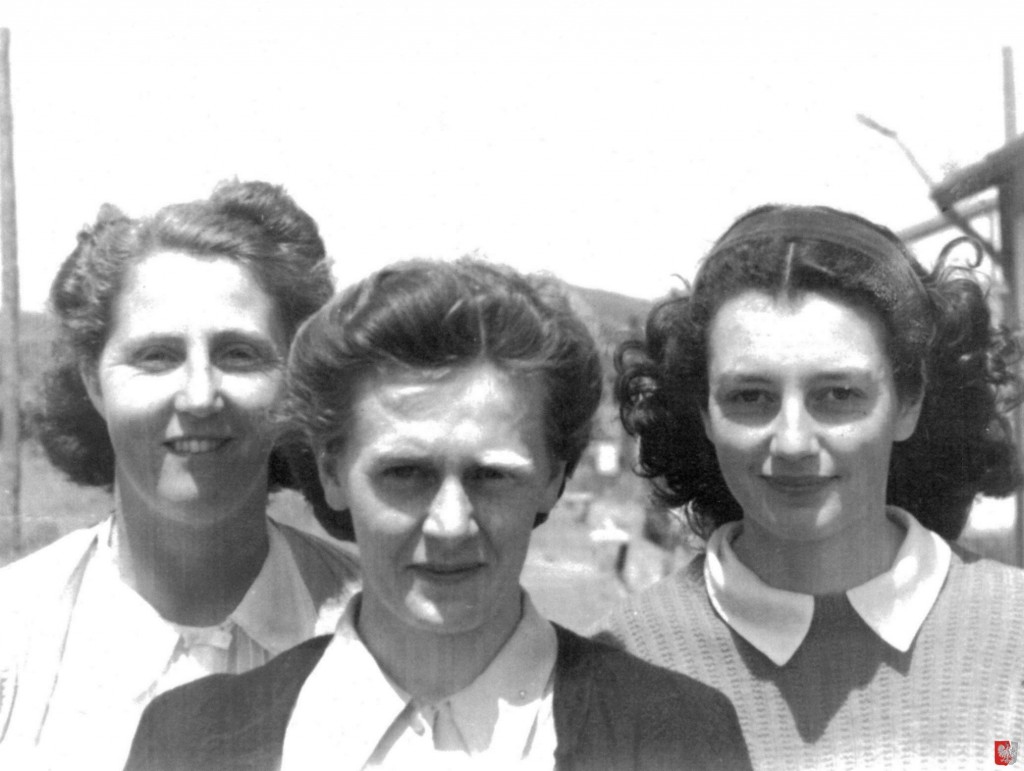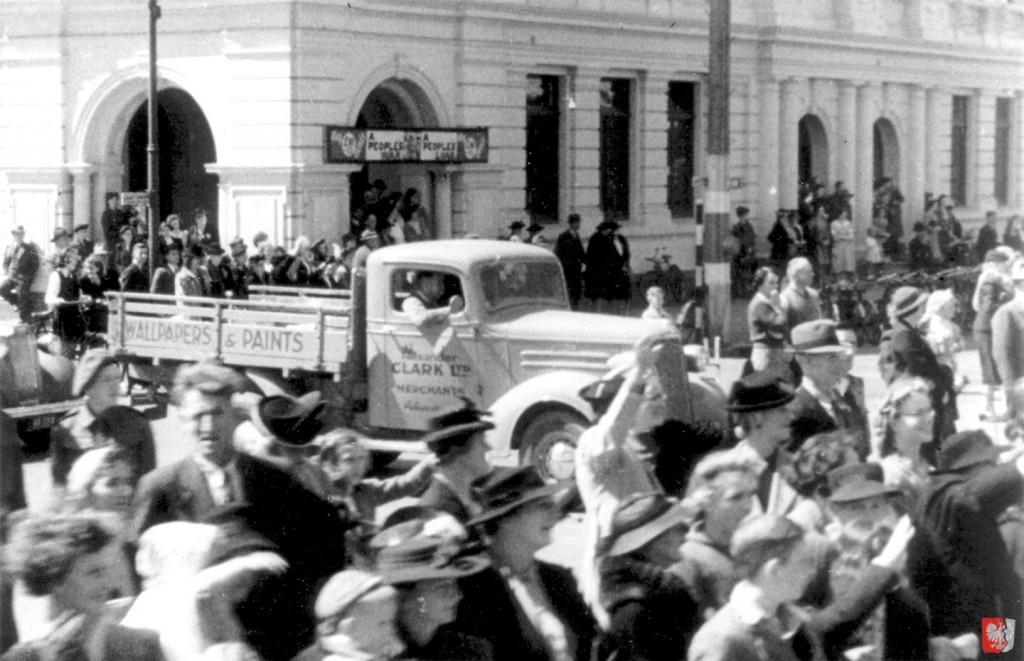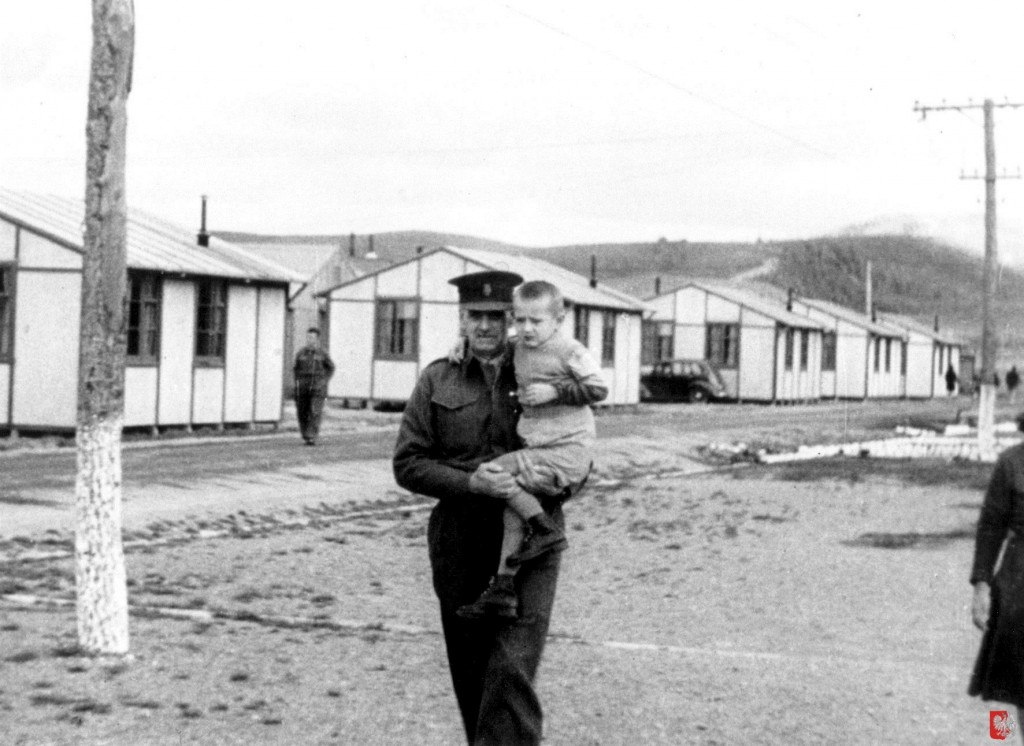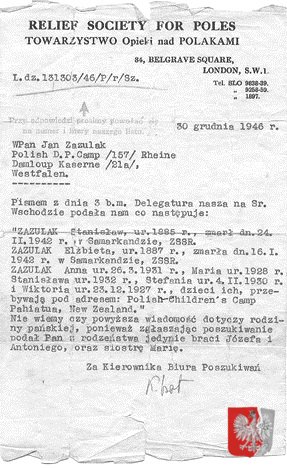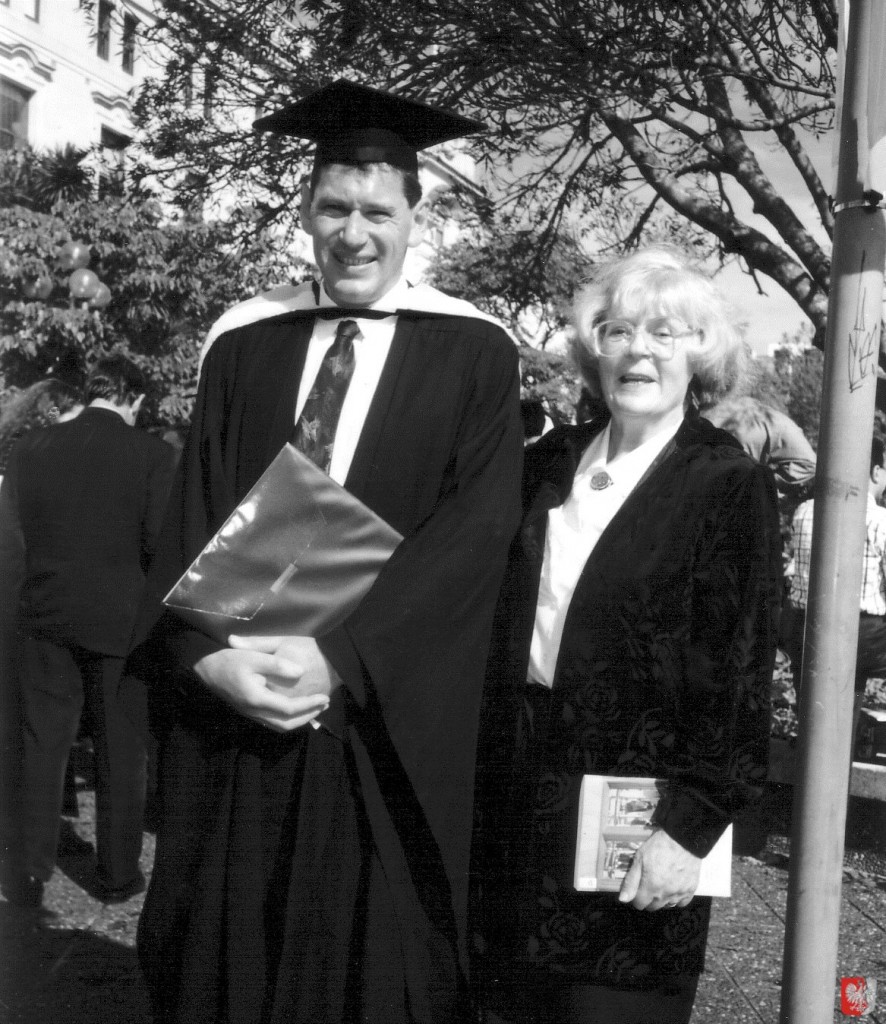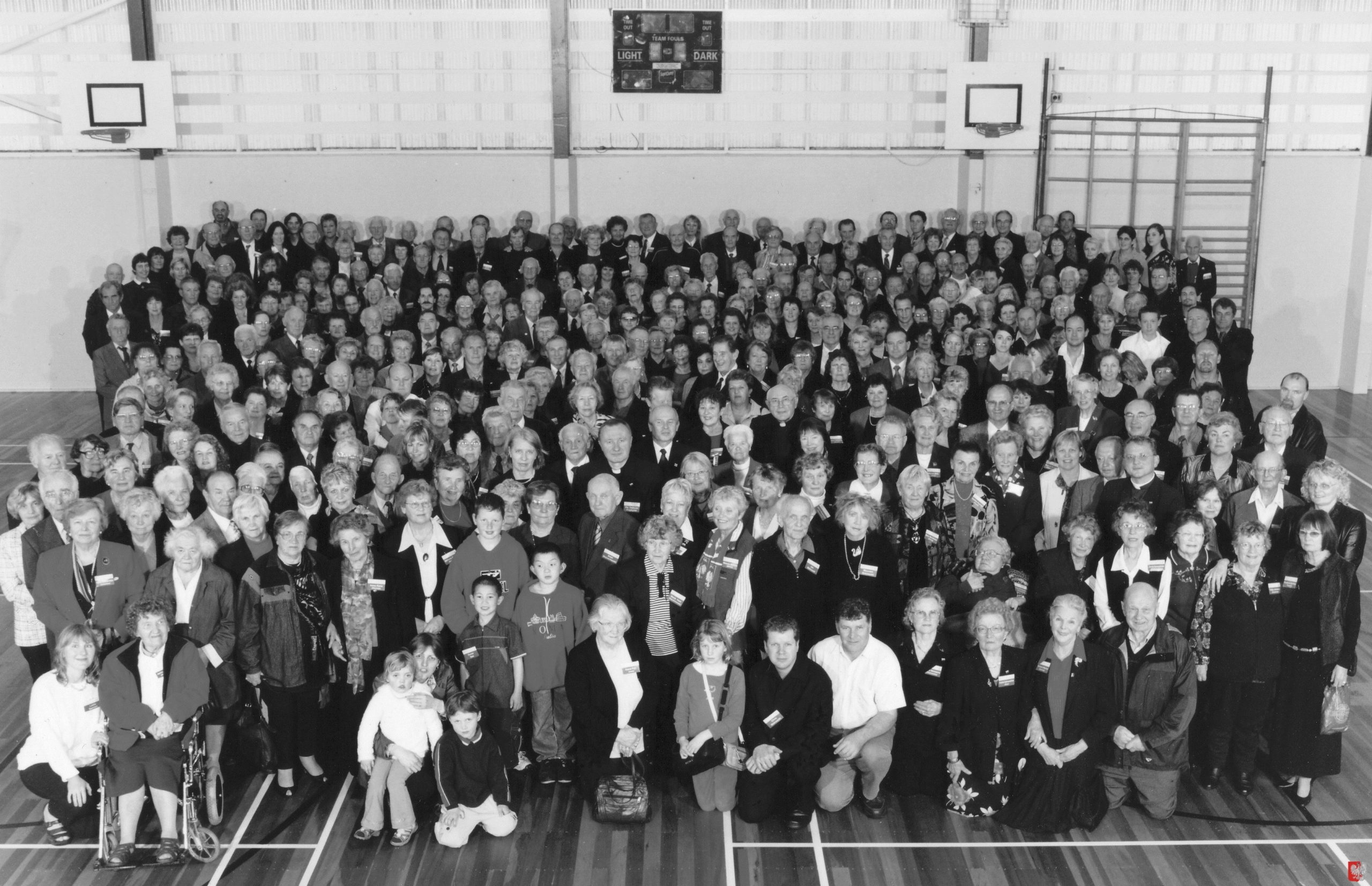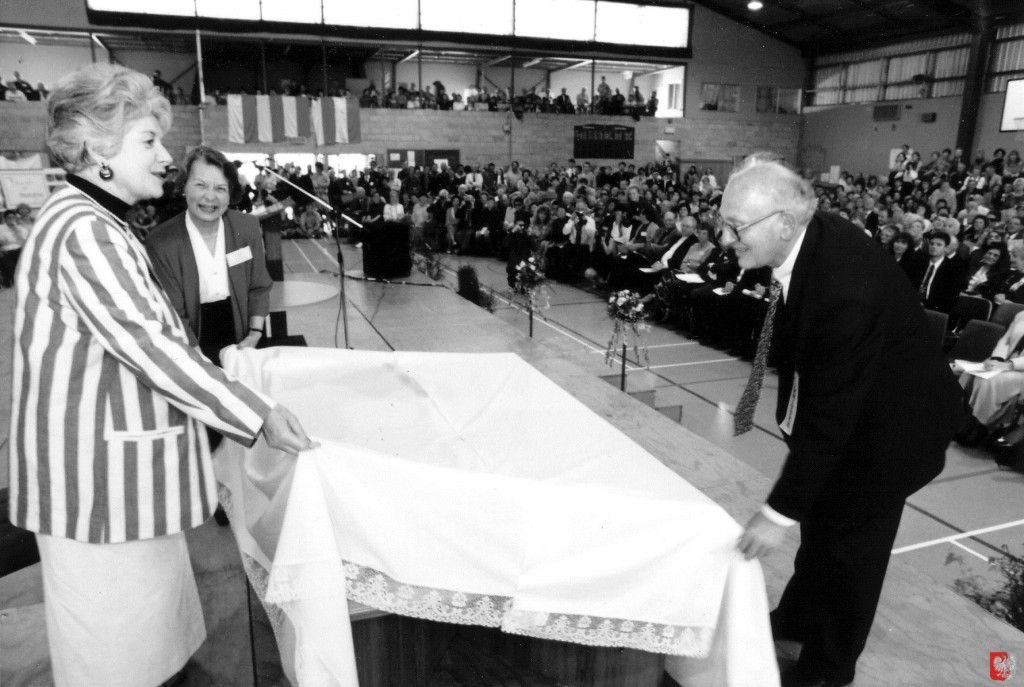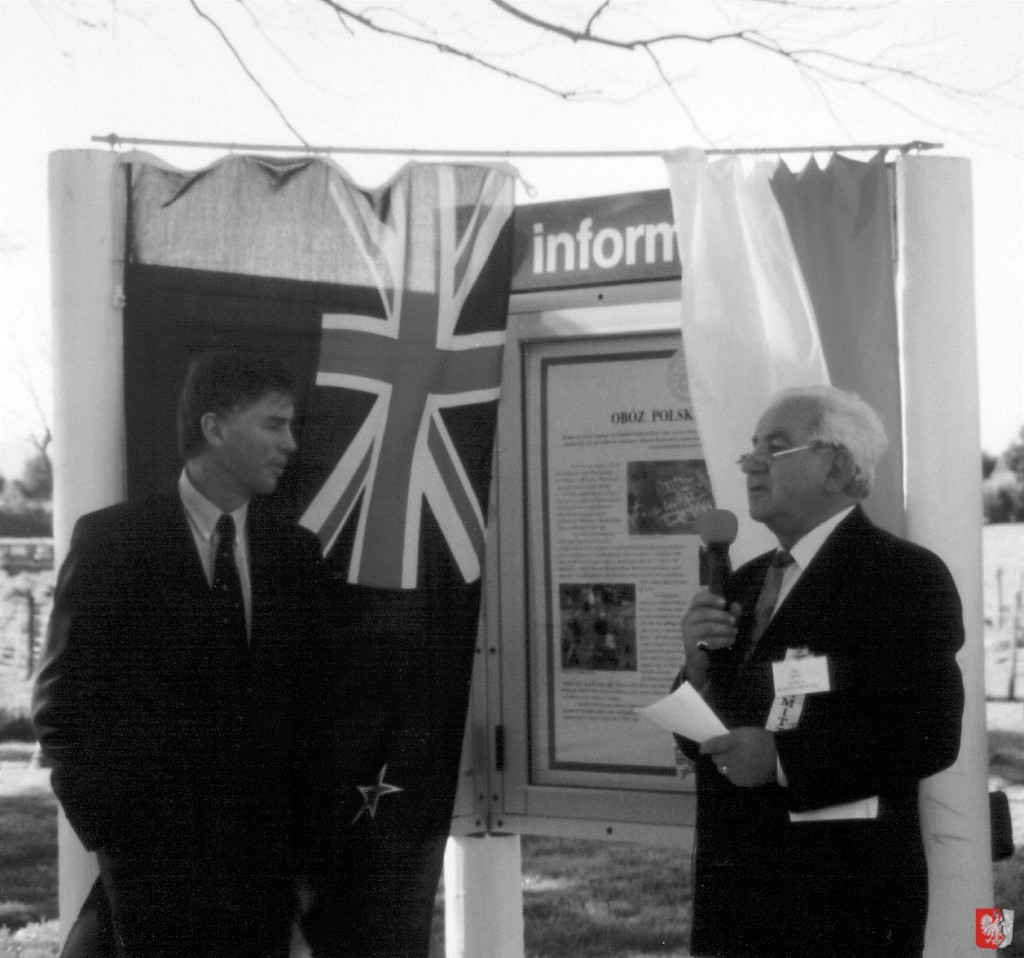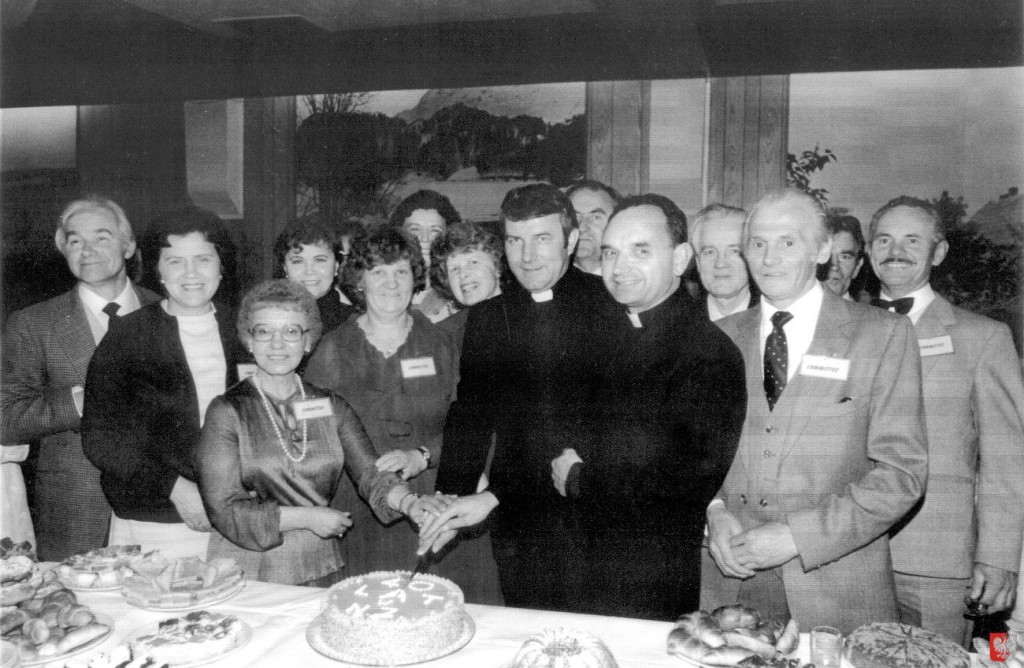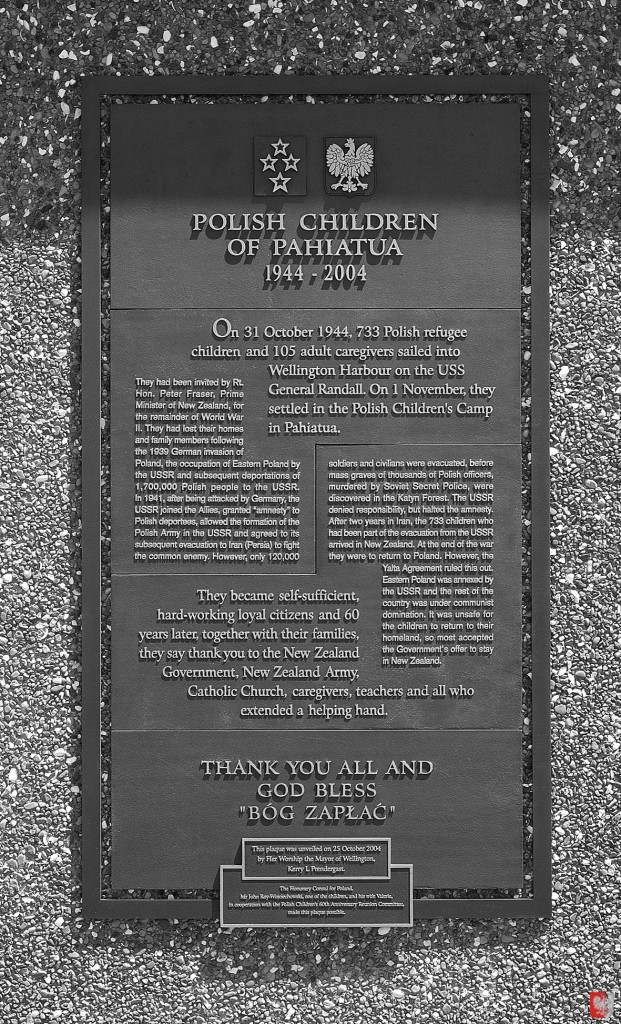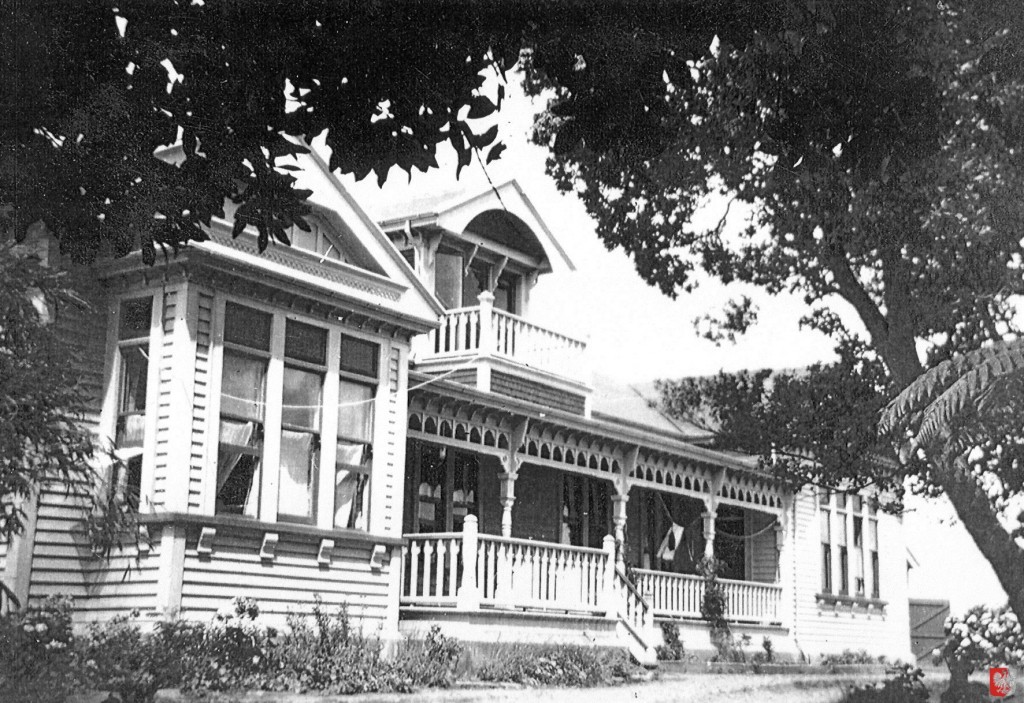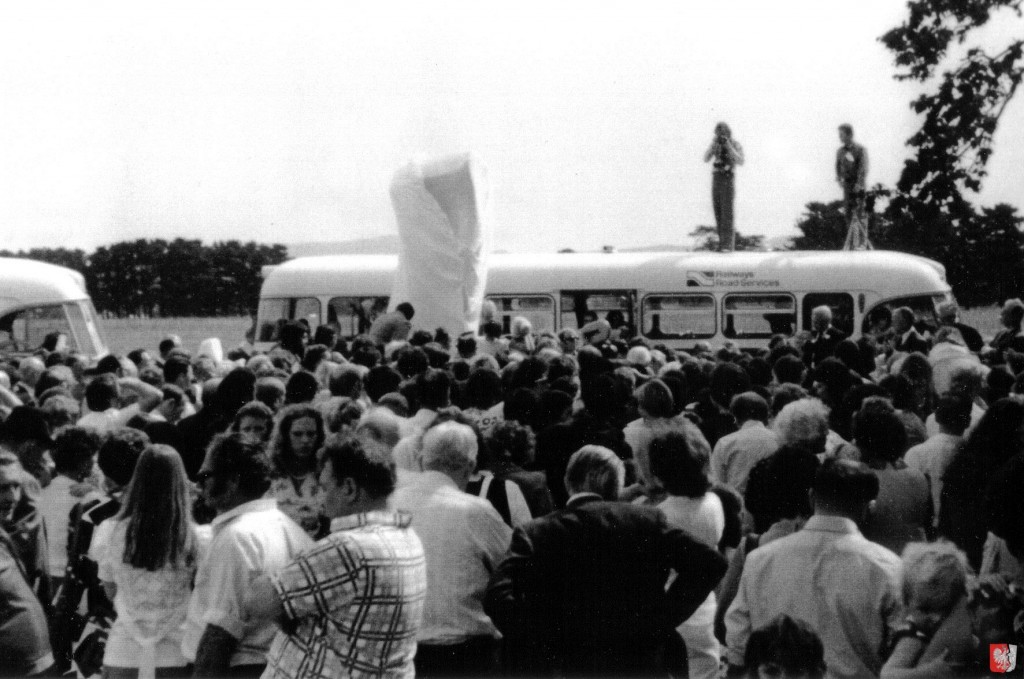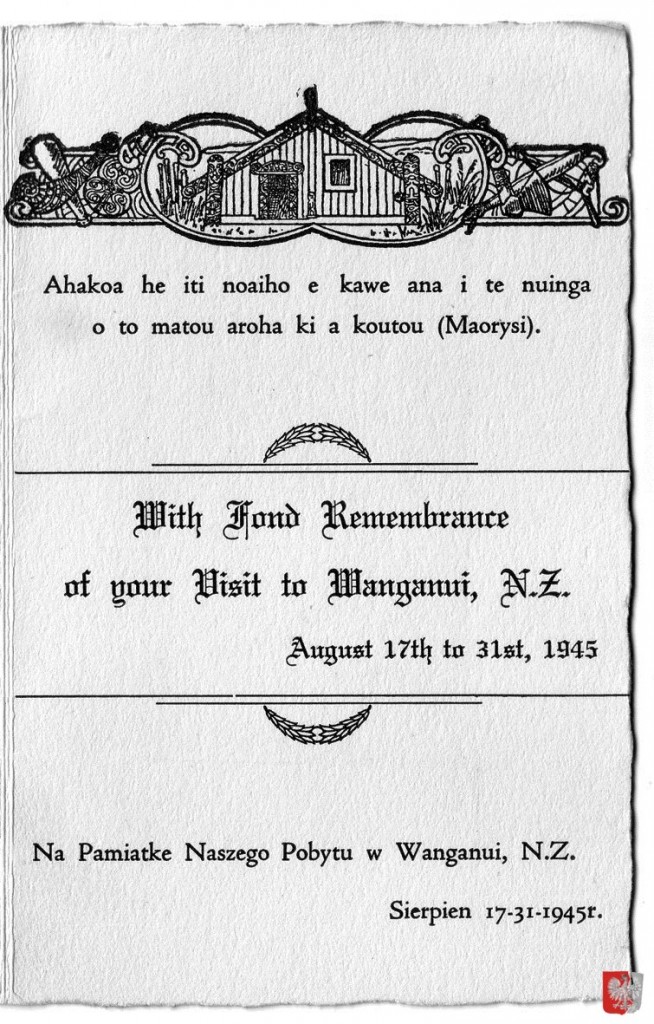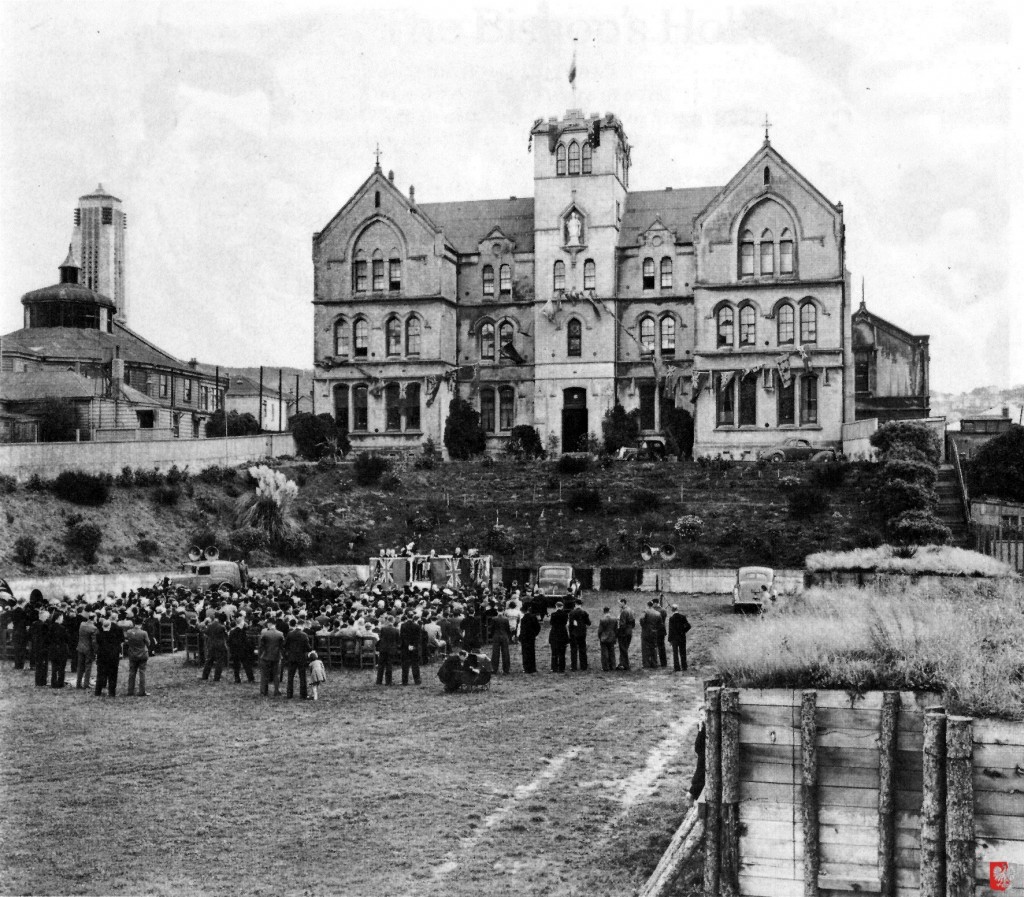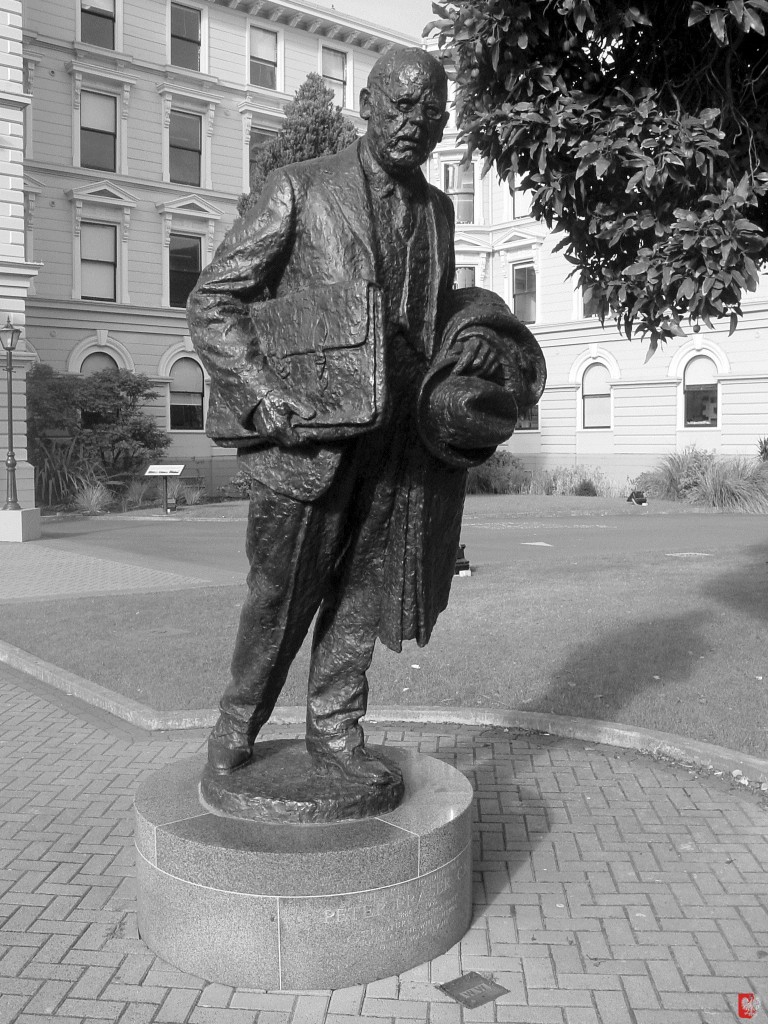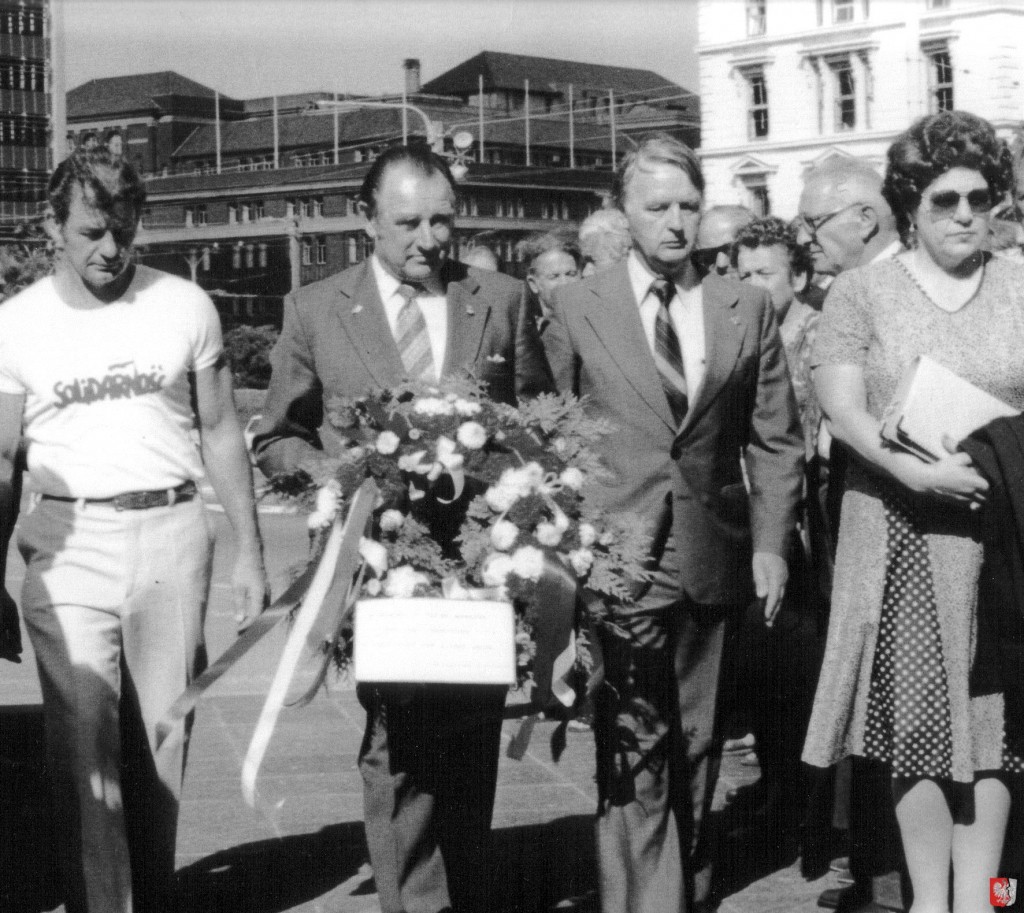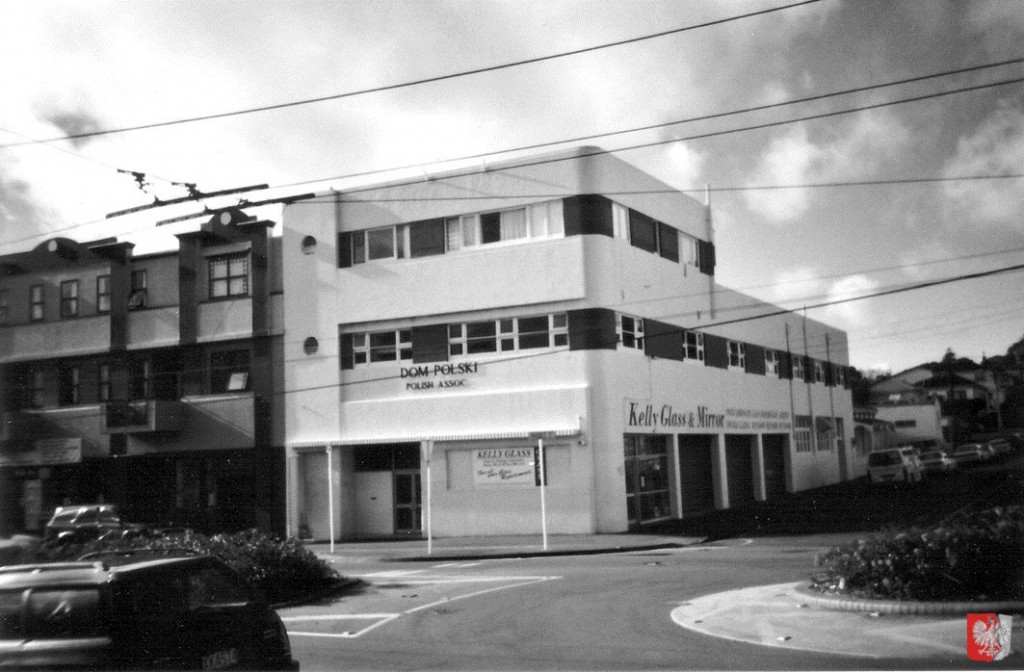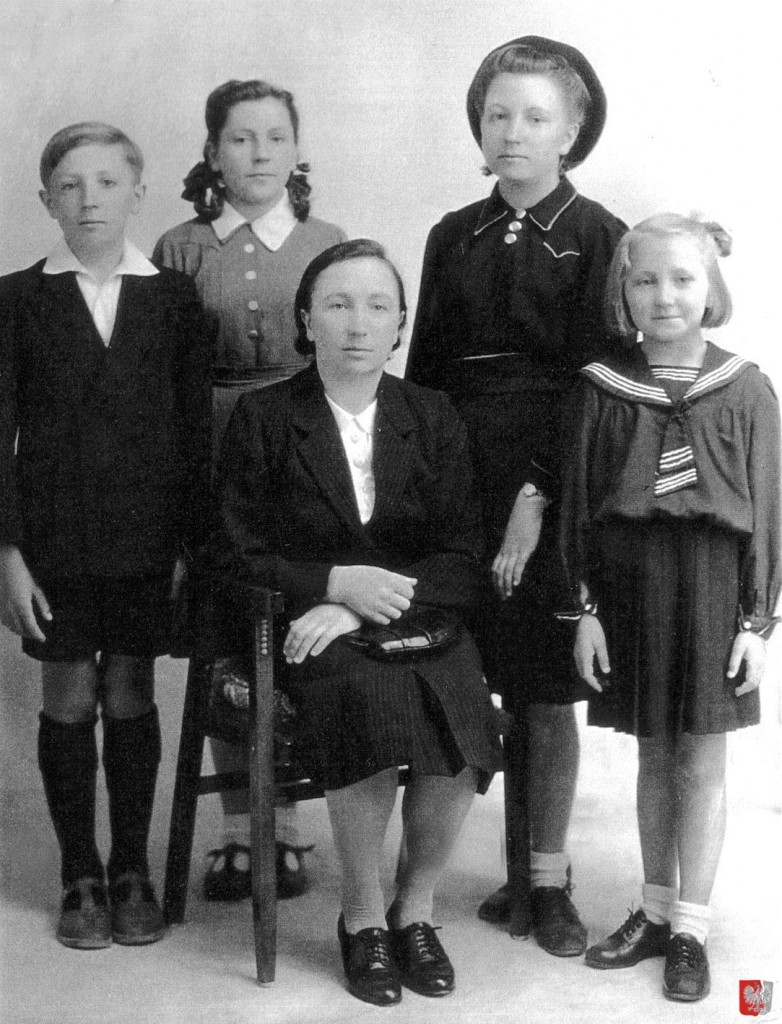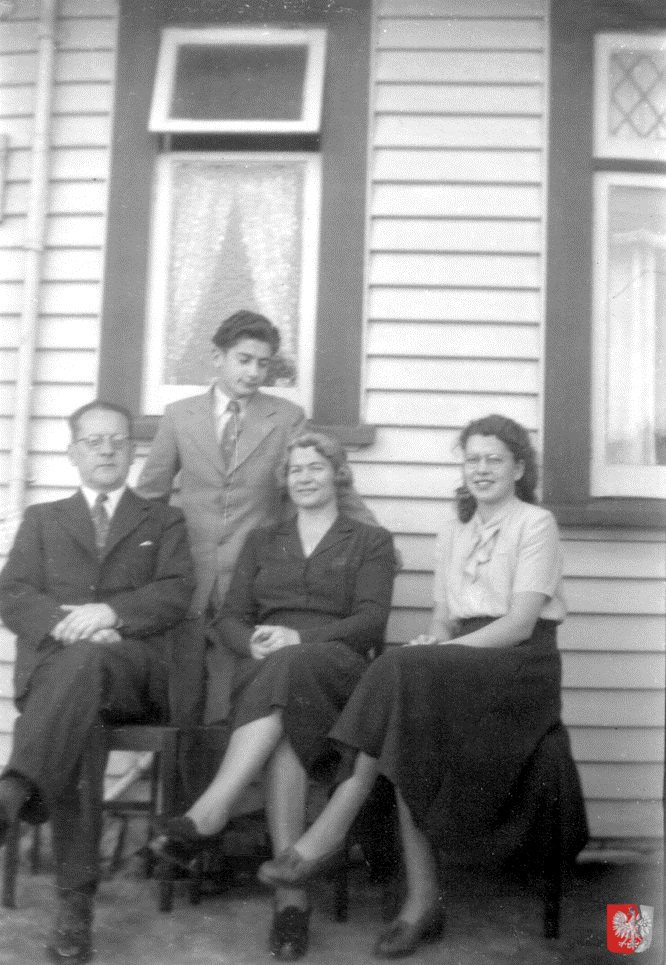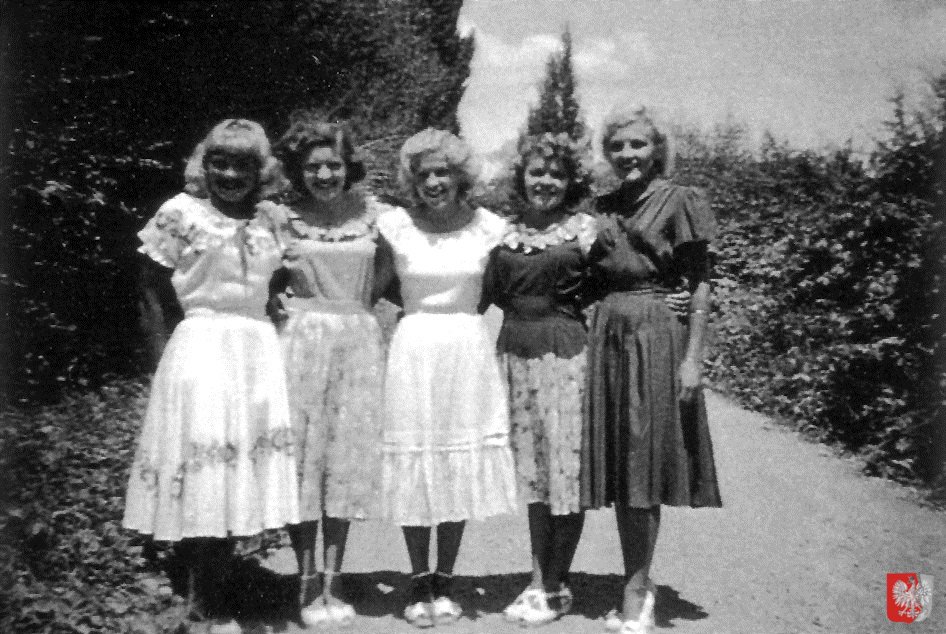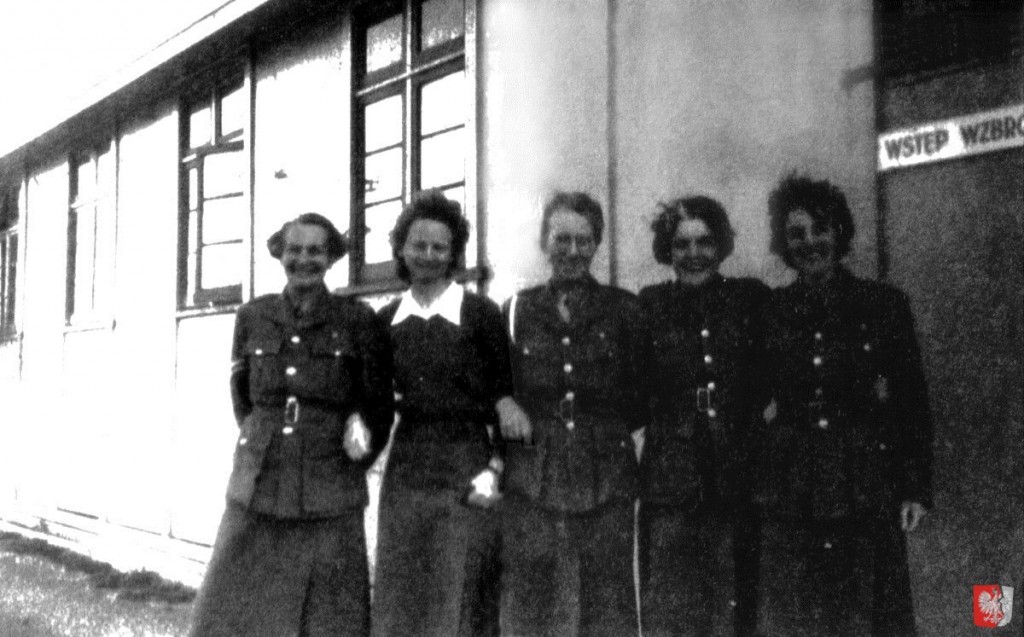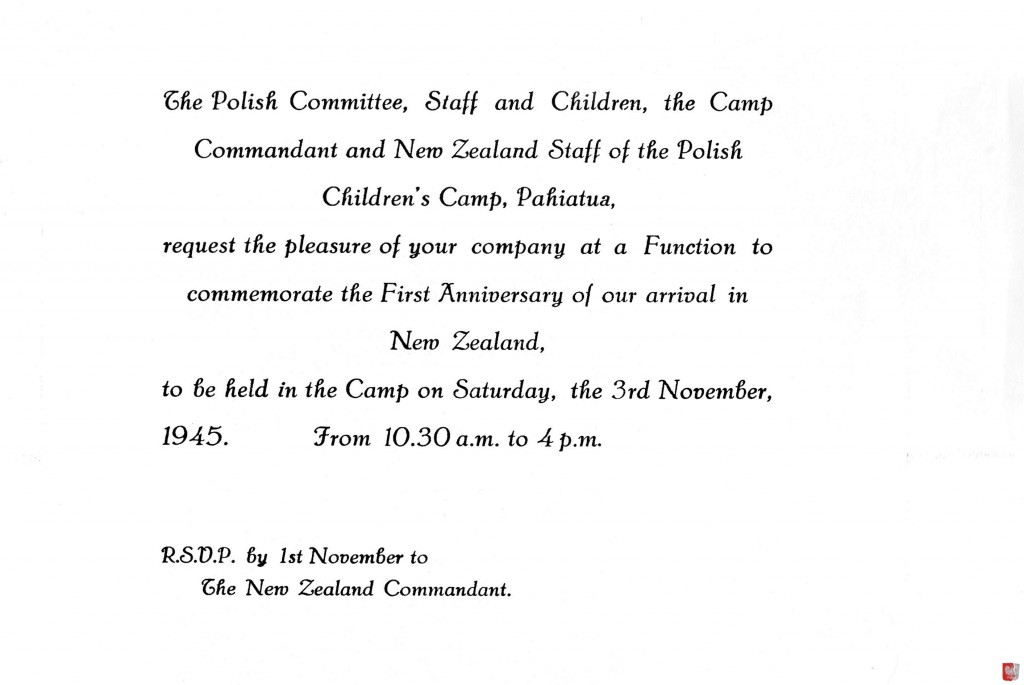Gallery – Polish refugees in New Zealand
Children on USS General Randall
A moment of anticipation and apprehension for the Polish children as the USS General Randall, their home for the past two weeks, docks in Wellington
Source: New Zealand's First Refugees Pahiatua's Polish Children Polish Children's Reunion Committee 2004 0-476-00739-9
Time Period: After WWII
Country: New Zealand
City/Town/Village: Wellington
English Teachers – Pahiatua Camp
Taking the "salute" on the rostrum. (l-r): Alexander Henderson and Frank Muller
Source: New Zealand's First Refugees Pahiatua's Polish Children Polish Children's Reunion Committee 2004 0-476-00739-9
Time Period:
Country: New Zealand
City/Town/Village: Pahiatua
Female Teaching Staff – Pahiatua Camp
The Polish Children's Camp's female New Zealand teaching staff, 1947. They were pioneers in teaching foreign children. (l-r): Mary Sergent, Mary McAllister (Eising) and Joan Hay
Source: New Zealand's First Refugees Pahiatua's Polish Children Polish Children's Reunion Committee 2004 0-476-00739-9
Time Period: After WWII
Country: New Zealand
City/Town/Village: Pahiatua
Polish Children on way to Pahiatua, greeted by New Zealanders
Palmerston North flocks to the railway station to see the Polish children refugees pass through their town on the way to Pahiatua. Showing the true extent of the townspeople's welcome, this photo was taken almost a mile away from the railway station.
Source: New Zealand's First Refugees Pahiatua's Polish Children Polish Children's Reunion Committee 2004 0-476-00739-9
Time Period: After WWII
Country: New Zealand
City/Town/Village: Palmerston North
First Day at Polish Children’s Camp in Pahiatua
On the first day at the Polish Children's Camp Pahiatua, a New Zealand soldier carries Witold (Victor) Pleciak to the dining room.
Source: New Zealand's First Refugees Pahiatua's Polish Children Polish Children's Reunion Committee 2004 0-476-00739-9
Time Period: During WWII
Country: New Zealand
City/Town/Village: Pahiatua
Letter from Relief Society for Poles to Jan Zazulak
An untold number of similar replies to searches for lost relatives from the war kept the world's postal service very busy. This letter from 1946 tells Joe Zazulak's father Jan that his five sisters had been found in the Polish Children's Camp in Pahiatua.
Source: New Zealand's First Refugees Pahiatua's Polish Children Polish Children's Reunion Committee 2004 0-476-00739-9
Time Period: After WWII
Country: New Zealand
City/Town/Village: Pahiatua
Paul Coates Graduates
Paul Coates graduaets with a law degree in 2004, and is pictured with his proud mother Irena Coates (Ogonowska).
Source: New Zealand's First Refugees Pahiatua's Polish Children Polish Children's Reunion Committee 2004 0-476-00739-9
Time Period: After WWII
Country: New Zealand
City/Town/Village:
Józef Zawada
Józef Zawada takes a lunch break at high noon during a hard day's work in Pio Pio.
Source: New Zealand's First Refugees Pahiatua's Polish Children Polish Children's Reunion Committee 2004 0-476-00739-9
Time Period:
Country: New Zealand
City/Town/Village: Pio Pio
60th Anniversary Group Photo – Pahiatua
The 60th anniversary group photo in St Patrick's College, Silverstream, 24 October 2004.
Source: New Zealand's First Refugees Pahiatua's Polish Children Polish Children's Reunion Committee 2004 0-476-00739-9
Time Period: After WWII
Country: New Zealand
City/Town/Village:
50th Anniversary – Pahiatua
The 50th anniversary of the Polish children's arrival in New Zealand, Pahiatua Sports Stadium, 23 October 1994. Józef Zawada (right) and Krystyna Kołodyńska (2nd from left) help Governor-General Dame Catherine Tizard (left) to unveil a scale model of the camp, which is now in the Pahiatua Museum.
Source: New Zealand's First Refugees Pahiatua's Polish Children Polish Children's Reunion Committee 2004 0-476-00739-9
Time Period: After WWII
Country: New Zealand
City/Town/Village: Pahiatua
50th Anniversary – Information Board – Pahiatua
MP John Falloon (left) and John Roy-Wojciechowski (right) unveil the information board next to the Pahiatua camp memorial at the 50th anniversary celebrations of the Polish children's arrival in New Zealand.
Source: New Zealand's First Refugees Pahiatua's Polish Children Polish Children's Reunion Committee 2004 0-476-00739-9
Time Period: After WWII
Country: New Zealand
City/Town/Village: Pahiatua
40th Anniversary – Pahiatua
Cutting the cake at the 40th anniversary of the Polish children's arrival in New Zealand. (l-r): Czesław Witkowski, Krystyna Witkowska, Irena Wierzbicka, Janina Kowalczyk, Helena Wypych, Irena Mroczek, Maria Węgrzyn, Father Stanisław Marut, Mieczysław Lis, Father Bronisław Węgrzyn, Józef Głowacz, Eugeniusz Szadkowski, Tadeusz Reder, Franciszek Wypych
Source: New Zealand's First Refugees Pahiatua's Polish Children Polish Children's Reunion Committee 2004 0-476-00739-9
Time Period: During WWII
Country: New Zealand
City/Town/Village:
60th Anniversary Plaque, Wellington
This plaque was unveiled on 25 October 2004 in Frank Kitts Park, Wellington, as part of the 60th anniversary celebrations.
Source: New Zealand's First Refugees Pahiatua's Polish Children Polish Children's Reunion Committee 2004 0-476-00739-9
Time Period: After WWII
Country: New Zealand
City/Town/Village: Wellington
Hawera Boys’ Hostel
Polish Boy's Hostel in Hawera, Princess Street extension. The hostel existed from 1949 to 1954, having achieved its objective of gradually absorbing its group of Polish children into the community.
Source: New Zealand's First Refugees Pahiatua's Polish Children Polish Children's Reunion Committee 2004 0-476-00739-9
Time Period: After WWII
Country: New Zealand
City/Town/Village: Hawera
Iranian Film Crew Filiming Monolith Unveiling – Pahiatua
On 22 February 1975, a commemorative monolith erected at the entrance to the former Polish Children's Camp in Pahiatua was unveiled. Because Iran gave shelter to Polish refugees from 1942 to 1945, a visiting Iranian TV crew filmed the unveiling for its viewers. Note the film crew on top of the bus.
Source: New Zealand's First Refugees Pahiatua's Polish Children Polish Children's Reunion Committee 2004 0-476-00739-9
Time Period: After WWII
Country: New Zealand
City/Town/Village: Pahiatua
Kuba, Pahiatua Camp
Leon Rudolf Rosenberg-Łaszkiewicz used to buy horses for the Polish army. At the camp, he bought a horse and named it Kuba. It was loved by all the children. Once, when Kuba escaped, Leon phoned the Pahiatua police in a panic using his best English: "Kuba, she is gone!" The officer understood that the wife had escaped.
Source: New Zealand's First Refugees Pahiatua's Polish Children Polish Children's Reunion Committee 2004 0-476-00739-9
Time Period: During WWII
Country: New Zealand
City/Town/Village: Pahiatua
Memorial Shield – Pahiatua Town Hall
This memorial shield was affixed to Pahiatua Town Hall in 1969 on the occasion of the 25th anniversary of the arrival of the Polish children in New Zealand.
Source: New Zealand's First Refugees Pahiatua's Polish Children Polish Children's Reunion Committee 2004 0-476-00739-9
Time Period: After WWII
Country: New Zealand
City/Town/Village: Pahiatua
Pahiatua Memorial Plaque
The plaque on the plinth of the memorial statue.
Source: New Zealand's First Refugees Pahiatua's Polish Children Polish Children's Reunion Committee 2004 0-476-00739-9
Time Period: After WWII
Country: New Zealand
City/Town/Village: Pahiatua
Polish House, Sandringham, Auckland
The Polish House in McDonald Street, Sandringham, Auckland.
Source: New Zealand's First Refugees Pahiatua's Polish Children Polish Children's Reunion Committee 2004 0-476-00739-9
Time Period:
Country: New Zealand
City/Town/Village: Auckland
Remembrance Certificate, Wanganui
A remembrance certificate in three languages (from top: Maori, English, Polish) was presented to each Polish child who holidayed in Wanganui in August 1945.
Source: New Zealand's First Refugees Pahiatua's Polish Children Polish Children's Reunion Committee 2004 0-476-00739-9
Time Period: After WWII
Country: New Zealand
City/Town/Village: Wanganui
St Patrick’s College, Wellington
The original St Patrick's College, Buckle Street, Wellington. It was subsequently demolished to make room for the motorway, which was still unbuilt half a century later. Some 30 Polish boys attended this college at one time. Note the Carillon tower in the left background.
Source: New Zealand's First Refugees Pahiatua's Polish Children Polish Children's Reunion Committee 2004 0-476-00739-9
Time Period:
Country: New Zealand
City/Town/Village: Wellington
Statue of NZ Prime Minister Peter Fraser
A statue of New Zealand's wartime Prime Minister Peter Fraser who was instrumental in bringing the Polish children to New Zealand. It stands outside the former Government Buildings in Wellington, one of the largest wooden buildings in the world.
Source: New Zealand's First Refugees Pahiatua's Polish Children Polish Children's Reunion Committee 2004 0-476-00739-9
Time Period: After WWII
Country: New Zealand
City/Town/Village: Wellington
Supporting Poland’s Solidarity Movement, Wellington 1981
A march to Wellington's Cenotaph to support Poland's Solidarity (Solidarność) movement and protest against the Soviet occupation of Poland, 9 February 1981. Note the railway station in the background and the former Government Buildings on the right. Leading the march are (l-r): Zdzisław Lepionka (Polish Association President), Ludwik Kowalczyk, Mieczysław Murawski and Dioniza Choroś (Gradzik)
Source: New Zealand's First Refugees Pahiatua's Polish Children Polish Children's Reunion Committee 2004 0-476-00739-9
Time Period: After WWII
Country: New Zealand
City/Town/Village: Wellington
The Polish House, Newtown, Wellington
The Polish House (Dom Polski) in Newtown, Wellington. Converted from a bakery in 1956 by voluntary labour, it is a cultural centre and focal point for the Wellington region's Polish community.
Source: New Zealand's First Refugees Pahiatua's Polish Children Polish Children's Reunion Committee 2004 0-476-00739-9
Time Period:
Country: New Zealand
City/Town/Village: Wellington
The Rombel Family – Pahiatua Camp
The Rombel Family, 3 May 1946. (l-r): Piotr, Zofia, Stefania, Maria, Helena
Source: New Zealand's First Refugees Pahiatua's Polish Children Polish Children's Reunion Committee 2004 0-476-00739-9
Time Period:
Country: New Zealand
City/Town/Village: Pahiatua
The Skiba Family
(l-r); Stanisław (father), Maria, Stanisław
Source: New Zealand's First Refugees Pahiatua's Polish Children Polish Children's Reunion Committee 2004 0-476-00739-9
Time Period:
Country: New Zealand
City/Town/Village: Pahiatua
The Skwarko Family – Pahiatua
(l-r): Stanisław (senior), Stanisław, Krystyna (senior), Krystyna
Source: New Zealand's First Refugees Pahiatua's Polish Children Polish Children's Reunion Committee 2004 0-476-00739-9
Time Period:
Country: New Zealand
City/Town/Village: Pahiatua
The Szczapa Sisters – Pahiatua
The Szczapa sisters during fruitpicking season in Motueka, 1949. (l-r): Janina, Maria, Teresa, Alicja, Jadwiga
Source: New Zealand's First Refugees Pahiatua's Polish Children Polish Children's Reunion Committee 2004 0-476-00739-9
Time Period: After WWII
Country: New Zealand
City/Town/Village: Motueka
WAAC Staff – Pahiatua Camp
The New Zealand women's Auxiliary Army Corps (WAAC) staff at the Polish Children's Camp, 1945. The sign reads "wstęp wzbroniony" (no admittance). Canteen lady Belle Alexander is second from left.
Source: New Zealand's First Refugees Pahiatua's Polish Children Polish Children's Reunion Committee 2004 0-476-00739-9
Time Period:
Country: New Zealand
City/Town/Village: Pahiatua
1st Anniversary Invitation – Pahiatua
1st Anniversary Invitation – Pahiatua
Source: New Zealand's First Refugees Pahiatua's Polish Children Polish Children's Reunion Committee 2004 0-476-00739-9
Time Period:
Country: New Zealand
City/Town/Village: Pahiatua


